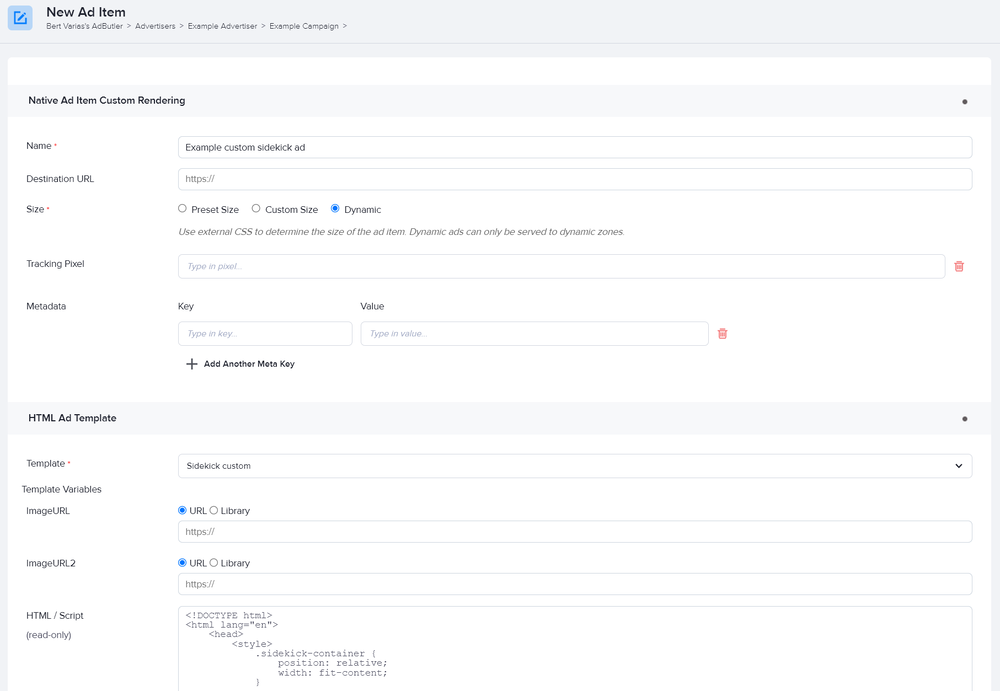How to make custom native sidekick ads
Sidekick ads are interactive ads that appear to be a typical medium rectangle (300 x 250), but reveal a second and larger image when the viewer hovers their mouse cursor over it. You can use native templates to create sidekick ad items that are tailored to your needs.
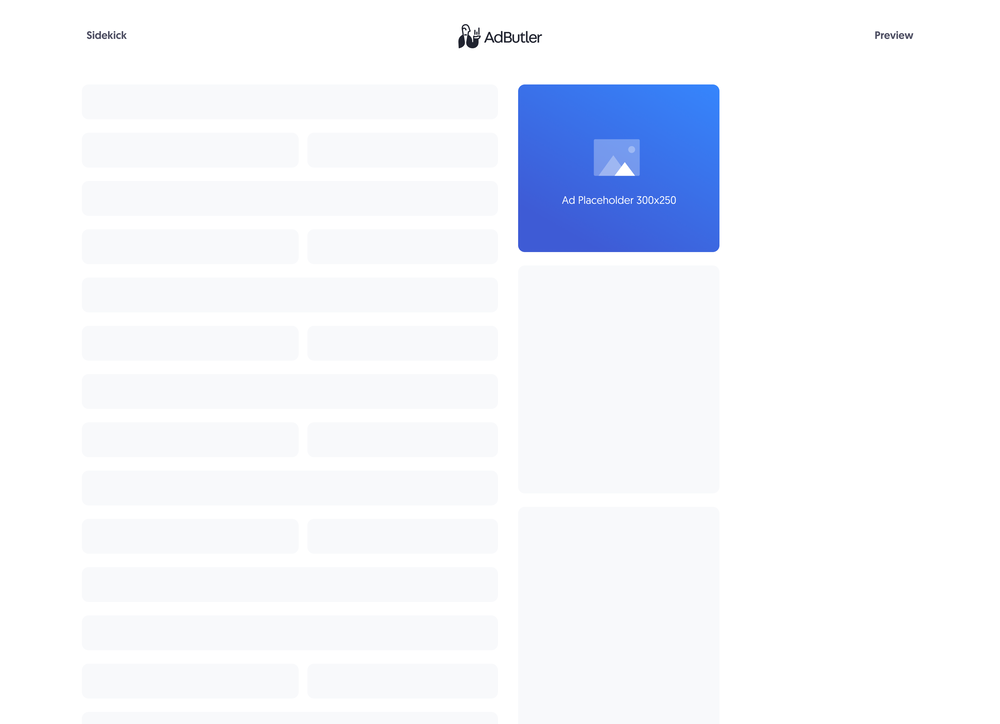
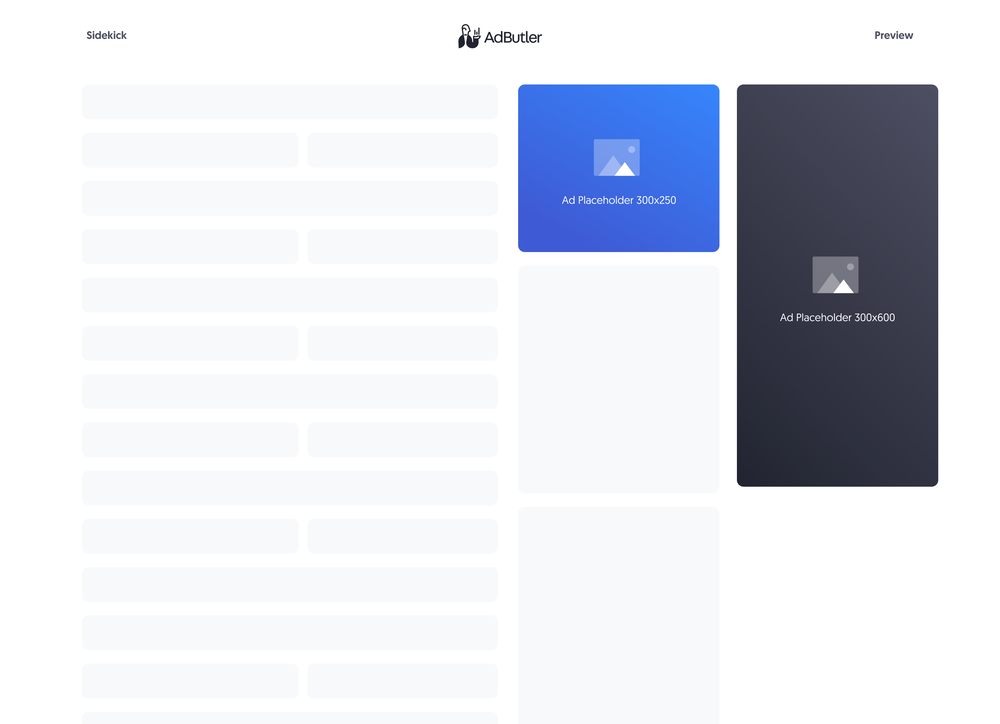
If you'd rather sanitize the template and have only HTML inside it, you should make your sidekick ad using a styled native ad template instead. For more information on the differences between custom native ads and styled native ads, read About native ad templates.
You will learn:
- How to create a template for a custom sidekick ad. You can customize the sample code to fit your needs.
- How to create a custom sidekick ad item once you have a custom sidekick template.
How to create a custom sidekick ad template
This template will require the user to provide the URL to where the image creatives are hosted when creating the sidekick ad item.
- Click Templates in the left navigation menu. The Templates section will appear.
- Click Native Ad Templates. The Native Ad Templates subsection will appear.
- Click Add Native Ad Template. The New Native Template window will appear.
- Click Custom Rendering/API. The New Native Ad Template page will appear.
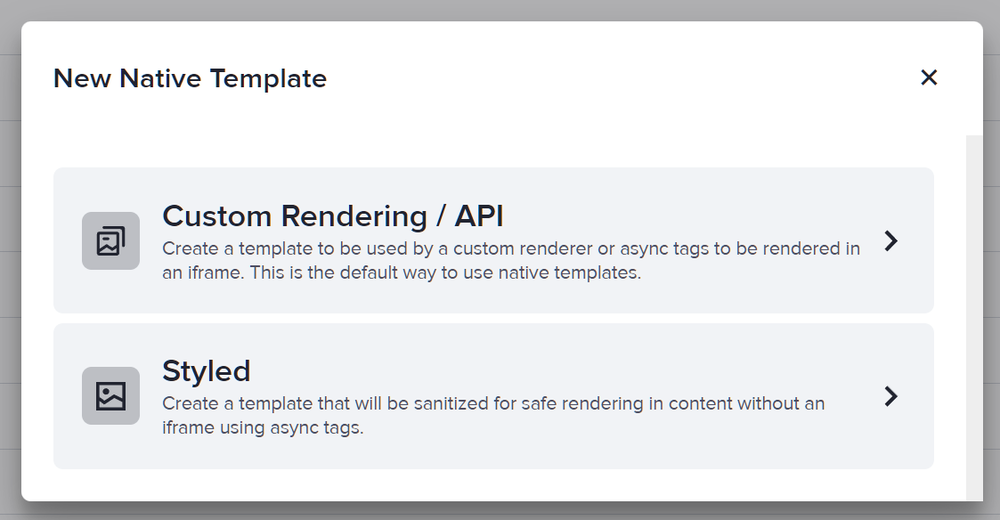
- Name the template then add two image URL variables for the images that will be in the ad. In our sample code, we called these variables ImageURL and ImageURL2.
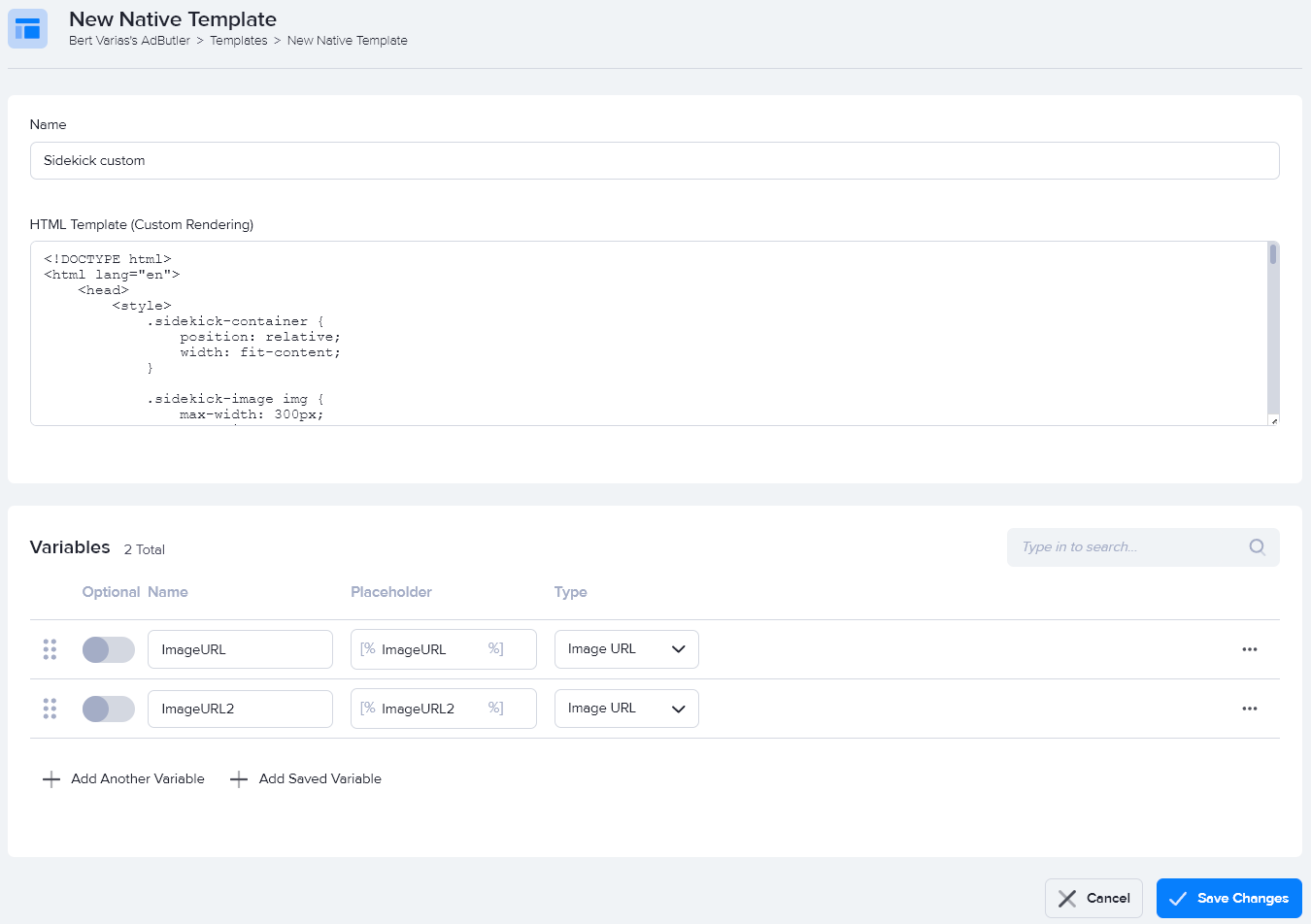
- Enter the code in the HTML Template (Custom Rendering) field, then click Save Changes.
Here's the code we used in our example:
<!DOCTYPE html>
<html lang="en">
<head>
<style>
.sidekick-container {
position: relative;
width: fit-content;
}
.sidekick-image img {
max-width: 300px;
max-height: 250px;
}
.expanded-image {
display: none;
position: absolute;
top: 0;
left: calc(100% + 1rem);
}
.expanded-image img {
max-width: 300px;
max-height: 600px;
}
.close-button-container {
position: absolute;
top: 5px;
right: 5px;
cursor: pointer;
}
.close-button {
width: 26px;
text-align: center;
display: inline-block;
color: #ffffff;
font-size: 21px;
background: #000000;
border-radius: 26px;
user-select: none;
}
</style>
</head>
<body>
<div class="sidekick-container">
<div class="sidekick-image" onmouseover="showExpandedImage()">
<a target="_blank" href="[TRACKING_LINK]">
<img src="[%ImageURL%]">
</a>
<div class="sidekick-close-button-container close-button-container">
<span class="sidekick-close-button close-button" onclick="closeButton()">×</span>
</div>
</div>
<div class="expanded-image">
<a target="_blank" href="[TRACKING_LINK]">
<img src="[%ImageURL2%]">
</a>
<div class="expanded-image-close-button-container close-button-container">
<span class="expanded-image-close-button close-button" onclick="closeExpandedImage()">×</span>
</div>
</div>
</div>
<script>
function showExpandedImage() {
document.querySelector('.expanded-image').style.display = 'block';
}
function closeButton() {
document.querySelector('.sidekick-container').style.display = 'none';
}
function closeExpandedImage() {
document.querySelector('.expanded-image').style.display = 'none';
}
</script>
</body>
</html>
You can now use this template to create a custom sidekick ad item.
How to create a custom sidekick ad item
- Go to the section of the relevant zone (Your AdButler > Publishers > Your Publisher > Your Zone) or campaign (Your AdButler > Advertisers > Your Advertiser > Your Campaign).
- Click Add Ad Item in the Ad Items table. The Add Ad Item window will appear.
- Click Native (Custom Rendering/API). The New Ad Item page will appear.
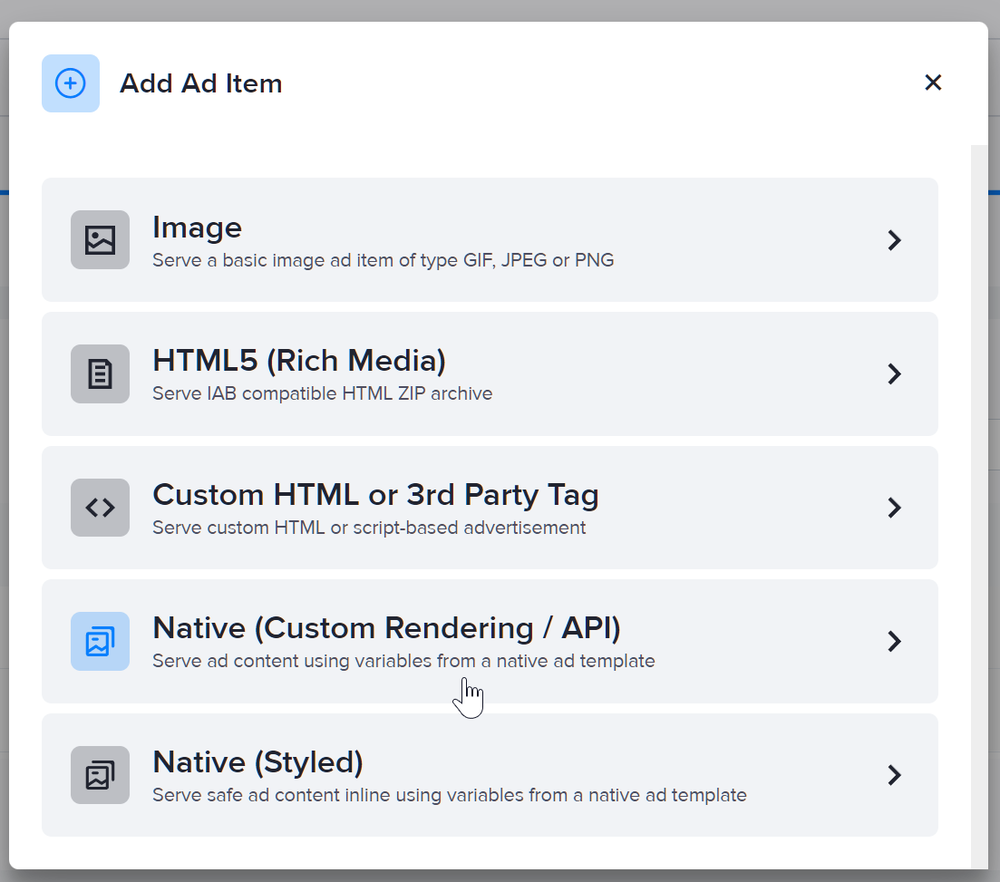
- Set the ad item's size.
If the ad item or its campaign will be assigned to a Standard zone, you must set the ad item's size to Dynamic.
If the ad item or its campaign will be assigned to a Native zone, you must enter the ad item's exact size. You can do this either by selecting Preset Size and then selecting the matching width and height values from the dropdown menu, or selecting Custom Size then entering the values in the fields that appear.
- Select your sidekick custom native ad template in the Template dropdown menu.
- Fill in the rest of the fields as needed, including the image URLs. If you entered a destination URL, you can test it by clicking Open Destination URL to the right of the field.
- Click Save Ad Item.
